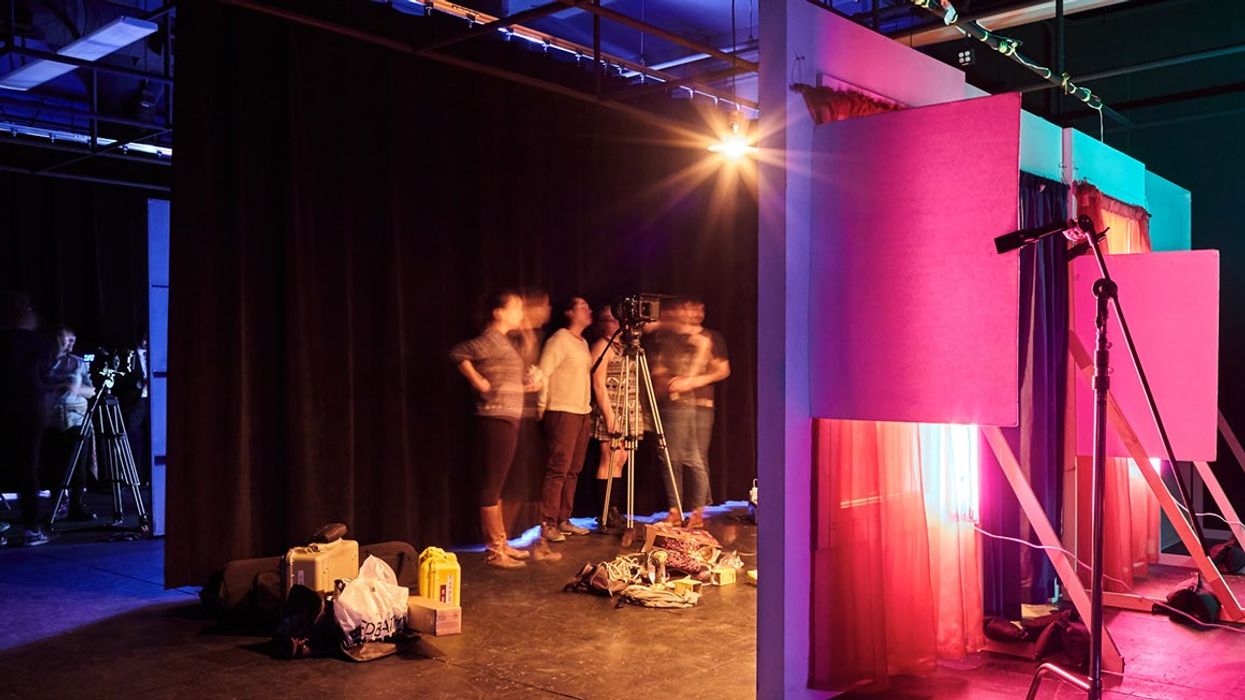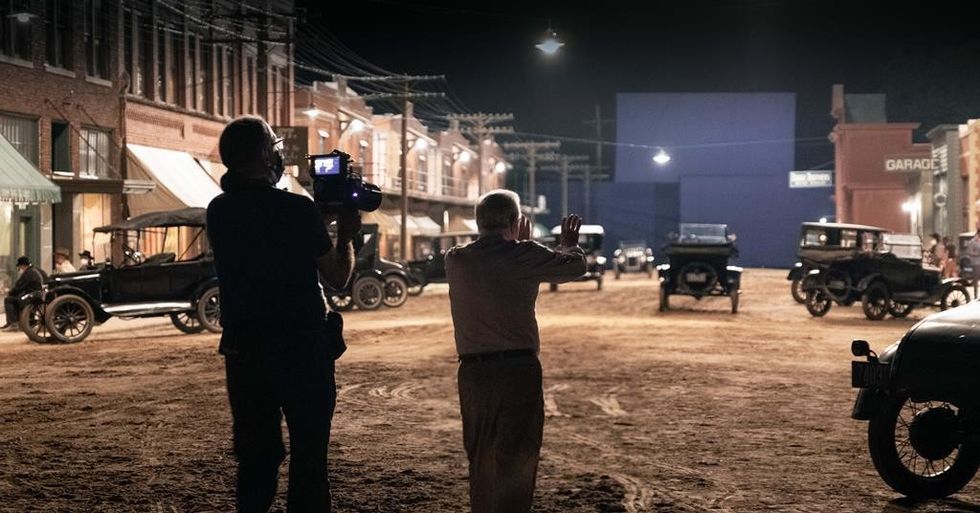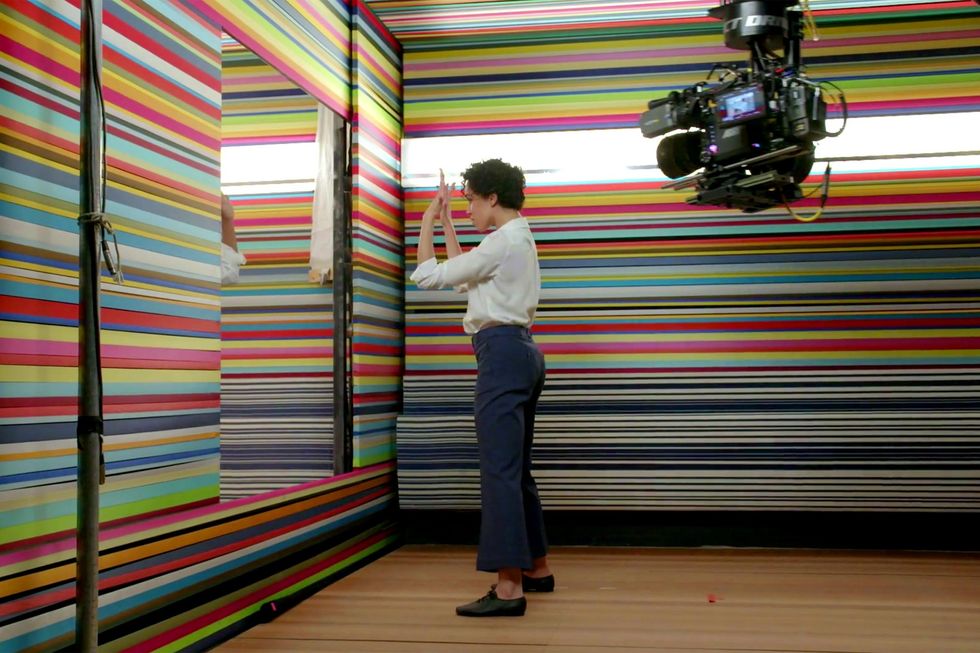REVIEW: DJI's Mavic 2 Pro and Mavic 2 Zoom Are Almost Identical—So Which One is Right for You?
These two drones differ in camera alone.

DJI, the world leader in the consumer drone market, added two more models to its fleet of flying cameras, the Mavic 2 Pro and the Mavic 2 Zoom. In terms of construction, obstacle avoidance, top speed, flight time, and the fact that they both feature a new Hyperlapse shooting mode, these drones are identical. Where they differ, however, is in their cameras.
The Mavic 2 Pro camera features a 1" Hasselblad designed sensor, capable of shooting 20MP JPEG or DNG still images, up to 10Bit UHD 4k video, and has user adjustable aperture (f/2.8 - f/11). Its fraternal twin, the Mavic 2 Zoom, features a 1/2.3" sensor capable of capturing 12MP JPEG or DNG still images, UHD 4K video at up to 30fps in 8Bit color depth and no user adjustable aperture.
At first glance, it would seem that the Mavic 2 Pro clearly has the more capable camera and, if all else is equal between these two drones, the Mavic 2 Pro would have more to offer. But there's a twist. The Mavic 2 Zoom offers a two-times optical zoom and has a focal length that is adjustable between 24mm and 48mm.
With two new shooting modes designed to take advantage of the variable focal length of the Mavic 2 Zoom, the answer as to "which Mavic 2 should I buy" becomes more nuanced. Before we start comparing optical zooms to sensor size, let's talk about the new and improved features that these drones both offer.
How well does it actually work? It works incredibly well.
New & Improved
Mavic 2 Pro & Zoom both ship with the same core upgrades: omnidirectional sensing for obstacle avoidance, improved APAS, longer flight time (31 minutes), 8GB on board memory (in case you forget a card or run out of recording space), quieter flight (new propeller design), and a new "Hyperlapse" Quick Shot mode that lets you take moving time-lapses from the air. DJI has essentially taken everything that was impressive on the Mavic Air and bundled that into a new, beefed-up Mavic Pro body and given us some creative shooting options to go with it.
Omnidirectional Sensing
The Mavic 2 line now features sensors that face forward, backward, upward, downward, and sideways. Together, these sensors help the Mavic 2 drones detect potential hazards in more directions than previous DJI drone models. The Mavic 2 passes the data from all of these sensors into APAS (Advanced Pilot Assistant Software) which is DJI's new obstacle avoidance system introduced with the Mavic Air. This lets the drone not only detect obstacles but create a three-dimensional map of its environment used to plot potential detours around obstacles in its path. While Mavic Air was able to do this while flying forward, the Mavic 2 drones are able to do this while flying forwards or backwards.
How well does it actually work? It works incredibly well. The most challenging test I gave it was to follow me using active track through a pathway cutting in between Willow trees with the long, hanging branches blowing in the wind. It was rather dark under the shade of the trees, the branches were thin (though grouped closely together), they were moving, I was moving, the Mavic 2 was moving, etc. In all, a pretty tall order and I was pretty nervous the first time I did it.
The second time I did it I was actually laughing incredulously at how well this little machine was able to map and navigate its surroundings while keeping an eye on me and following my lead. As with any technology, it's there to assist you, not replace you. There are many environmental factors that can influence the effectiveness of sensing technology like APAS so, first and foremost, fly safely but know that with Mavic 2's improved APAS, you have some pretty amazing tech on your side to help you navigate tricky flight plans.
Hyperlapse
Moving time-lapses (hyperlapses) make for really engaging shots. They can help you create dynamic establishing shots to show the passage of time, they can be used to transport your viewers from one time & place in your story to another, they can be used in myriad artistic use cases, and they look really cool. Until now, it's been fairly time consuming and tricky to create hyperlapses from drones. Battery life has always been a challenge: you'd want to be up there shooting longer but the battery would be running out and you'd have to cut it short.
Keeping your subject framed properly was another challenge. Keeping your footage smooth and steady was almost impossible and would require lots of work in post. The Mavic 2 drones simplify the process and have distilled it into a quick-shot mode. In order to execute a hyperlapse, you identify your subject by tapping or drawing a box around it, you specify how often you want to take a picture (starts at two-second intervals) and how long you want your final time-lapse video to be.
Once that's done, you hit "Go" and your hyperlapse recording begins. As convenient as that is, there are three modes within hyperlapse: "Free" which lets you manually fly in whichever direction you'd like (pro tip: press C1 or C2 to put the drone into "cruise control" so that you don't have to sit there with your fingers on the sticks the whole time), "Orbit" which will circle around your subject, keeping it center-framed while creating the hyperlapse, and "Waypoint" mode which will allow you to create a complex flight path for the drone and then fly it automatically while taking pictures at your desired interval. After the last image in your hyperlapse sequence has been captured, the drone will hover while it stitches all the photos into a Full HD video clip that you can readily share.
"But what about 4K?," I can hear you saying. Hyperlapse gives you the option to save all the still images (shot in JPEG or in DNG raw) so that you can have the most creative freedom in post.
Quiet
The Mavic 2 drones are surprisingly quiet, making them a great option for event shooters and making them more usable in dialogue scenes. The secret is in the propeller design. The swept blades allow the props to slice through the air 40% more quietly than the previous model and it's a great feature to have.
Memory Inside
Ever shoot a little too long and run out of space? Ever show up to do a quick shoot, or pulled over unexpectedly to get a quick shot and realize you didn't have the memory card inserted (or had left it home)? Well, the Mavic 2 drones now feature 8GB of internal storage so that you won't be stranded in those situations.
The Comparison
Now that we've gotten the similarities covered, let's look at where these two cameras are different and try to figure out which version is right for whom. Mavic 2 Pro has a 1" Hasselblad image sensor capable of capturing 20MP still images, UHD 4K video in up to 30fps and in 10bit color. The Mavic 2 Zoom features a 2X optical zoom, allowing you to shoot at focal lengths from 24mm—48mm and anything in between. The Mavic 2 Zoom also features two creative shooting modes designed specifically for its zoom lenses.
Mavic 2 Zoom Unique Features
The defining characteristic for which the Mavic 2 Zoom is named is, of course, its 2x Optical Zoom. There is something really interesting about being able to zoom in mid-flight. In addition to zooming, just being able to vary the focal length while moving can yield some very dynamic and interesting results.
You can control the zoom via the Go4 App and one of the things I thought was noteworthy was that you can create smooth, eased zooms even if you move the slider drastically. For example, you can quickly move the zoom slider from one extreme to the other and the camera will smoothly and gradually zoom. This means that you can quickly initiate a zoom without getting bogged down trying to finesse a GUI slider.
Also along the lines of making things "push button," DJI has included a new Quick Shot mode on the Mavic 2 Zoom called "Dolly Zoom" that allows you to create some very interesting effects autonomously.
Dolly Zoom
Dolly Zoom automatically performs Hitchcock-style dolly zoom while keeping your subject perfectly framed. Found in the Quick Shot menu, select Dolly Zoom, draw a box around your subject, and hit "Go". Mavic Zoom takes care of the rest.
Super Rez
Though Mavic 2 Zoom doesn't have the large sensor of the Mavic 2 Pro, it does offer a way to create still shots at a higher resolution than would otherwise be possible on a 1/2.3" sensor, and it's called Super Rez. Super Rez is a mode that automatically takes nine photos (working outward in all directions from a centered subject), with the lens zoomed in to 48mm, and then automatically stitches them together into a larger, more highly detailed images than is attainable by taking a single exposure at 24mm.
It seems like an interesting trade. On one hand, the Mavic 2 Zoom has the smaller, less impressive sensor. On the other hand, it has an optical zoom that's being used creatively to offset the smaller sensor size.
These two new purpose-built Quick Shot modes do a great job of showing off the Mavic 2 Zoom's optical zoom and, if you really want to get creative, those modes are just the beginning. For one thing, you can change to various static focal lengths and take multiple takes of the same subject (wide-medium-tight) to give your project some variety. There's now also more you can do to add interest to a static shot by slightly and gradually zooming in or out on your subject.
One of the most interesting use cases I found was putting the Mavic 2 Zoom in Active Track mode and then zooming in and out on my subject. Doing this can produce some really interesting storytelling shots. In the example below, I was circling this kayaker in Active Track mode. As the Mavic 2 Zoom flew around behind her, I zoomed out to reveal more of her surroundings. Having a zoom lens on a drone can definitely open up creative options for filmmakers and I only wish that the Mavic 2 Zoom was equipped with the same sensor as the Mavic 2 Pro to have the best of both worlds.
Currently, if you want the best of both worlds, you need to buy both drones—no problem if you're Cardi B and you "don't wanna choose"—but for most of us, it's going to be one or the other and so, speaking of the other, read on to learn more about the Mavic 2 Pro.
Mavic 2 Pro Unique Features
Larger 1 Inch Hasselblad Sensor
The big news with the Mavic 2 Pro is its big sensor. The 1" size makes it equivalent to the size of the sensor in the Phantom 4 Pro yet some may say that its 10Bit color depth and updated Hasselblad color science gives it an edge over the Phantom 4 Pro (stay tuned for our head-to-head comparison coming soon). The larger sensor allows the Mavic 2 Pro to capture 20MP still images and UHD 4k (3840 x 2160) video and it can do so with better low-light performance than the Mavic 2 Zoom. Mavic 2 Pro can capture 14 stops of dynamic range, giving it a full-stop advantage over the Mavic 2 Zoom.
Pricing & Availability
Mavic 2 Pro retails for $1,449 while Mavic 2 Zoom is slightly less, coming in at $1,249. Both models are in-stock, available, and ship next-day. The "Fly More" combo (two extra batteries, extra propellers, car charger, charging hub, carrying bag, and power adapter) is available as an additional upgrade to both Mavic 2 drones for $319.
Having spent a couple of weeks with the Mavic 2 Pro and Mavic 2 Zoom, they are both fascinatingly capable drones that provide a full-point upgrade to the Mavic line.
Conclusion
Both Mavic 2 drones feel like well-engineered tools that are capable of creating quality imagery while being able to meet the demands of portability. If your purchase criteria are: highest possible image quality in a portable drone (i.e. put it in a backpack or jacket pocket and go), then the Mavic Pro is the one to go with.
If, however, you've already got a Phantom 4 Pro and feel that's portable enough but you'd like a drone that can help you create shots you can't create with your Phantom 4 Pro, then the Mavic 2 Zoom becomes attractive (especially at $1249). To make things even more complicated, DJI has promised that the gimbals & cameras on the two drones will be interchangeable, though you will have to send the drone into to DJI and pay a fee (as of yet undisclosed) for their technicians to perform the swap.
Going off of specs alone, the sensor in the Mavic 2 Pro outshoots the sensor in the Mavic 2 Zoom. It has better color science, higher bit depth, a larger sensor, and the ability to capture higher resolution still images in a single click. However, that doesn't necessarily mean that it's the right camera for you.
Intended application will inform your choice as will what other (if any) drones you're already shooting with. For example, if you mainly shoot video and you already are doing that on a Phantom 4 Pro (that you're not looking to replace), the Mavic 2 Zoom might seem attractive because, although its sensor isn't as good as you have in your Phantom, the drone is smaller and it can let you create shots using the zoom lens that you can't create with the Phantom.
If, however, you don't have a Phantom 4 Pro and are either looking to upgrade from an earlier Phantom or are looking to go smaller (say from an Inspire) and want the best quality footage and stills you can get, then you will be more enticed by the Mavic 2 Pro. If most of your shooting work is still photography, the Mavic 2 Pro does that with more resolution and higher quality than the Mavic 2 Zoom. That might push you toward the Mavic 2 Pro.
Having spent a couple of weeks with the Mavic 2 Pro and Mavic 2 Zoom, they are both fascinatingly capable drones that provide a full-point upgrade to the Mavic line while also seeming to give the flagship Phantom 4 Pro a run for its money.
Be on the lookout for No Film School's head-to-head review of the Mavic 2 Pro & Phantom 4 Pro coming soon!


 Go Behind the Scenes of the Filming of 'Killers of the Flower Moon'
Go Behind the Scenes of the Filming of 'Killers of the Flower Moon' BTS of Spike Jonze's Apple Ad Apple
BTS of Spike Jonze's Apple Ad Apple









